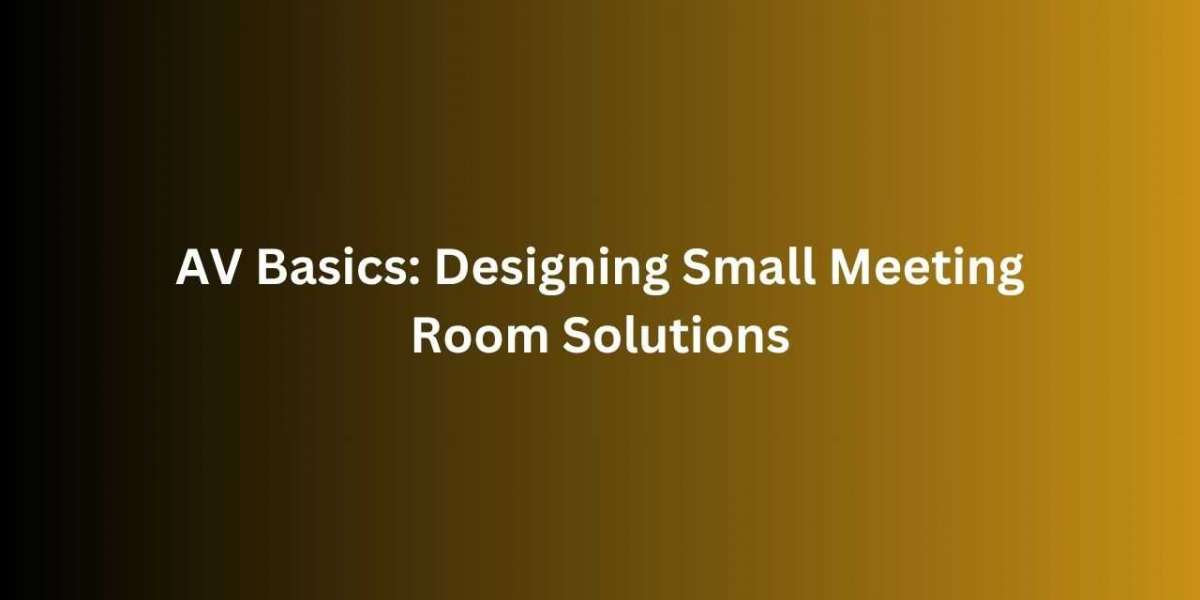In the evolving landscape of modern workplaces, small meeting rooms or huddle spaces have become essential for collaboration, especially in hybrid work environments. With the rise of remote communication and spontaneous brainstorming sessions, businesses need compact, functional, and reliable AV systems. This is where XTEN-AV leads the way, offering smart tools and design automation for AV system installation. Whether it is optimizing equipment placement or ensuring system compatibility, XTEN-AV helps integrators deliver efficient solutions tailored for small meeting spaces.
Why Focus on Small Meeting Rooms
Small meeting rooms are the backbone of flexible workspaces. Unlike large conference rooms, these spaces are designed for teams of two to six people. They are used for quick discussions, remote conferencing, one-on-ones, or breakout sessions during larger meetings. To meet these demands, the AV setup must be intuitive, compact, and powerful.
AV system installation for such spaces must focus on ease of use, minimalism, and robust connectivity. Without the clutter or complexity of larger systems, small meeting rooms must still offer high-quality audio and video performance to support collaboration.
Step 1: Understanding User Requirements
Before designing an AV solution, it is crucial to understand how the space will be used. Some questions to ask include:
Will it be used primarily for video conferencing?
Does the team use laptops, tablets, or fixed systems?
Are external participants joining remotely?
Is content sharing required on a screen?
The answers will shape the type of components needed, from cameras and microphones to displays and control systems.
Step 2: Choosing the Right Display
The heart of any small meeting room is the display. Depending on the room size and seating distance, a flat-panel display between 40 to 65 inches is typically ideal. The display should be bright, high-resolution, and compatible with modern connectivity options.
If the room will host frequent video conferences, a display with built-in collaboration tools or touchscreen capability can enhance interactivity. Make sure the display is mounted at eye level for optimal viewing.
Step 3: Selecting a Microphone and Speaker System
Audio clarity is non-negotiable. Small spaces may cause echo or sound reflections, so choosing the right microphone and speaker system is critical.
For simplicity, all-in-one soundbars with built-in microphones and speakers are excellent choices. These reduce cabling and hardware clutter. Alternatively, ceiling microphones or tabletop mics can be used if the room acoustics are treated properly.
Echo cancellation and automatic gain control should be part of the audio system to avoid feedback and inconsistent audio levels.
Step 4: Camera Selection and Placement
A good video experience is just as important as audio. In small rooms, wide-angle cameras are preferred to capture all participants without distortion.
Placement is key. The camera should be positioned at eye level and directly in front of the participants. Many modern conferencing cameras come with AI-powered features like automatic framing and tracking, which make remote interactions feel more personal and professional.
XTEN-AV makes it easy to model camera fields of view in its AV design software, helping integrators ensure there are no blind spots.
Step 5: Connectivity and Cable Management
Small meeting rooms should feel clean and uncluttered. Wireless content sharing solutions like Barco ClickShare or native wireless mirroring via AirPlay or Miracast are great for this.
For wired solutions, make sure to use in-wall or under-table cable management to keep things neat. USB hubs, HDMI passthroughs, and network ports should be readily accessible.
XTEN-AV’s AV system installation tools allow professionals to visualize wiring diagrams and streamline installation planning for tidy cable routing.
Step 6: Control Systems and Ease of Use
Users should be able to walk into the room and start a meeting with minimal effort. A touch panel or a simple control keypad can be used to power the system, switch inputs, or adjust volume.
Alternatively, a one-touch join feature integrated with Microsoft Teams or Zoom Rooms offers a seamless experience.
Automation features like occupancy sensors can be added to turn systems on or off when people enter or exit the room, saving energy and improving usability.
Step 7: Network and Power Considerations
Ensure the room has sufficient power outlets and data ports. If the system relies on Power over Ethernet devices like PTZ cameras or control panels, network switches must support PoE standards.
Stable internet connectivity is a must for video conferencing. Use wired connections where possible to avoid wireless interference.
XTEN-AV allows designers to plan for power load requirements and PoE device compatibility during the design phase, reducing onsite surprises during AV system installation.
Step 8: Testing and Training
Once installed, test the AV system thoroughly. Check camera angles, mic pickup zones, sound clarity, screen resolution, and control functionality.
Train users on how to start a call, share content, and troubleshoot basic issues. A user-friendly guide or a quick video walkthrough goes a long way in making the space productive.
Final Thoughts
Designing AV solutions for small meeting rooms is not just about installing equipment. It is about creating a seamless, user-friendly experience that empowers teams to connect, collaborate, and innovate.
XTEN-AV helps integrators do this by offering powerful tools that automate design processes, simulate real-world setups, and ensure the right components are selected for each space. As organizations continue to invest in flexible and hybrid work environments, small meeting rooms equipped with the right AV technology will remain a critical asset.
With thoughtful planning, proper equipment, and smart design tools like XTEN-AV, any small room can become a high-performance meeting space.
Read more: https://avfusionhorizon.weebly.com/blog/beginners-guide-to-auditorium-av-system-design








